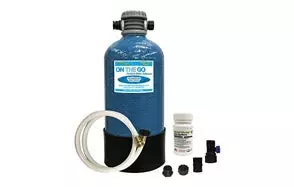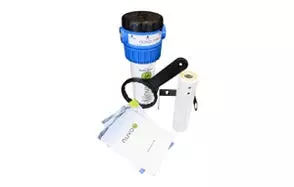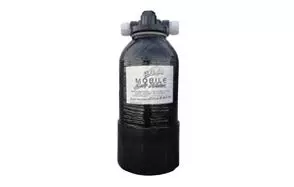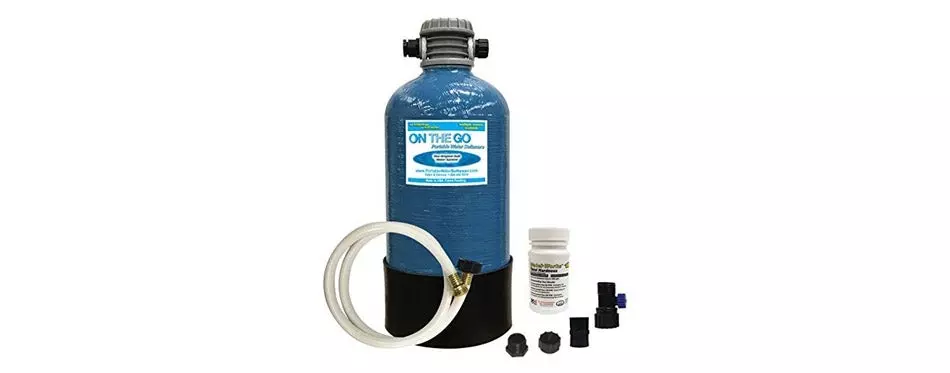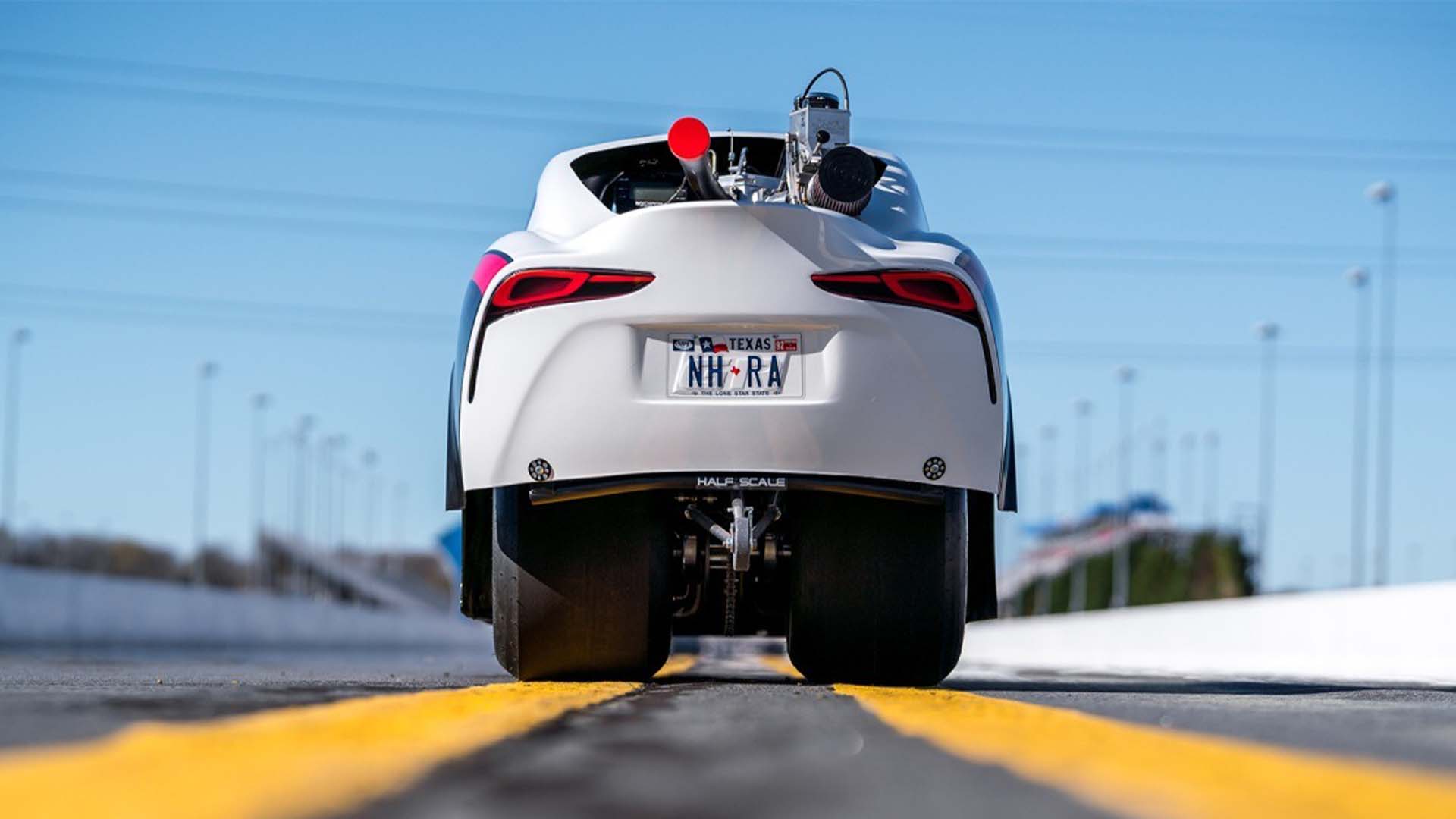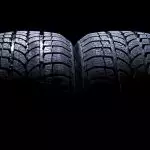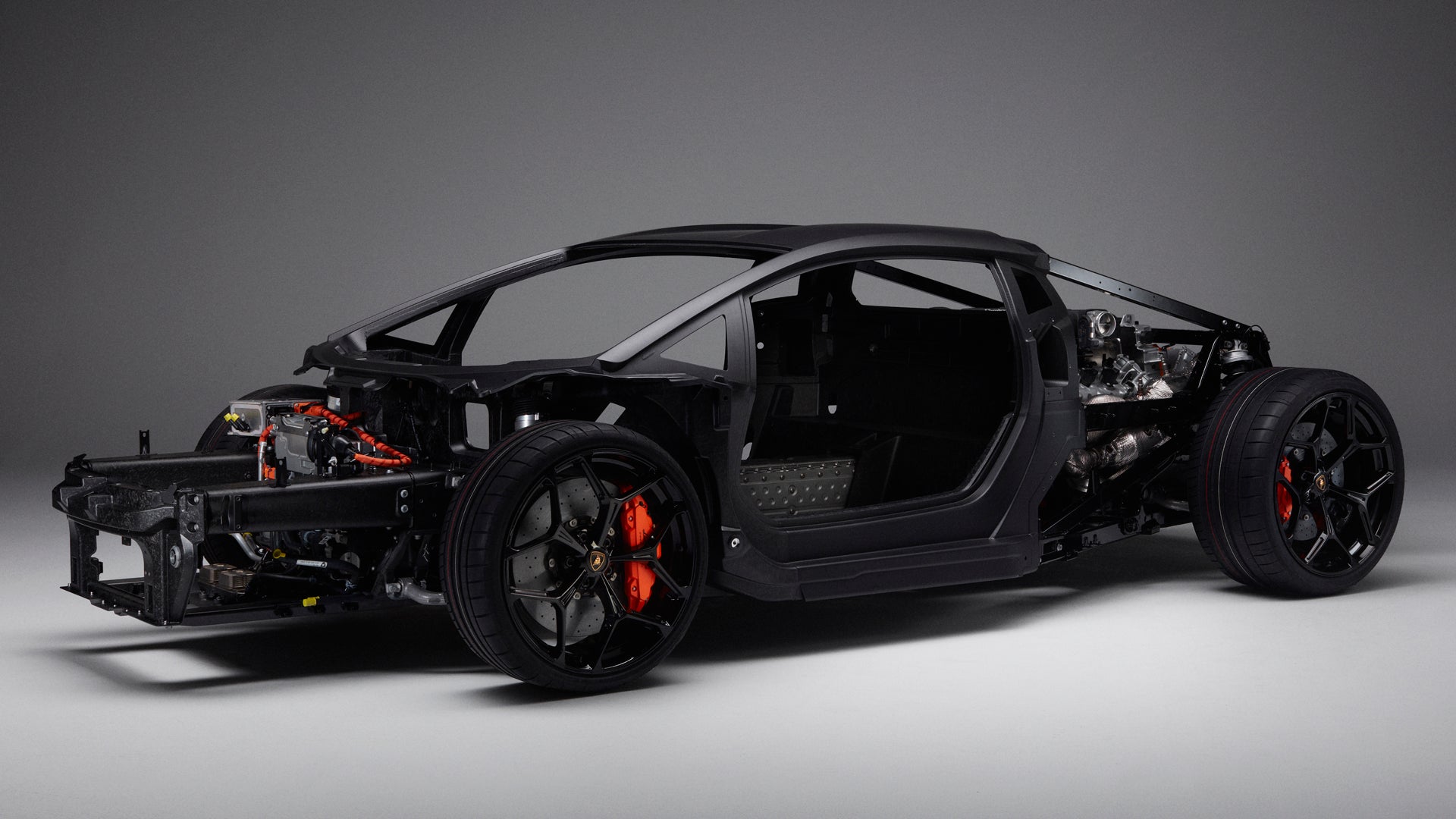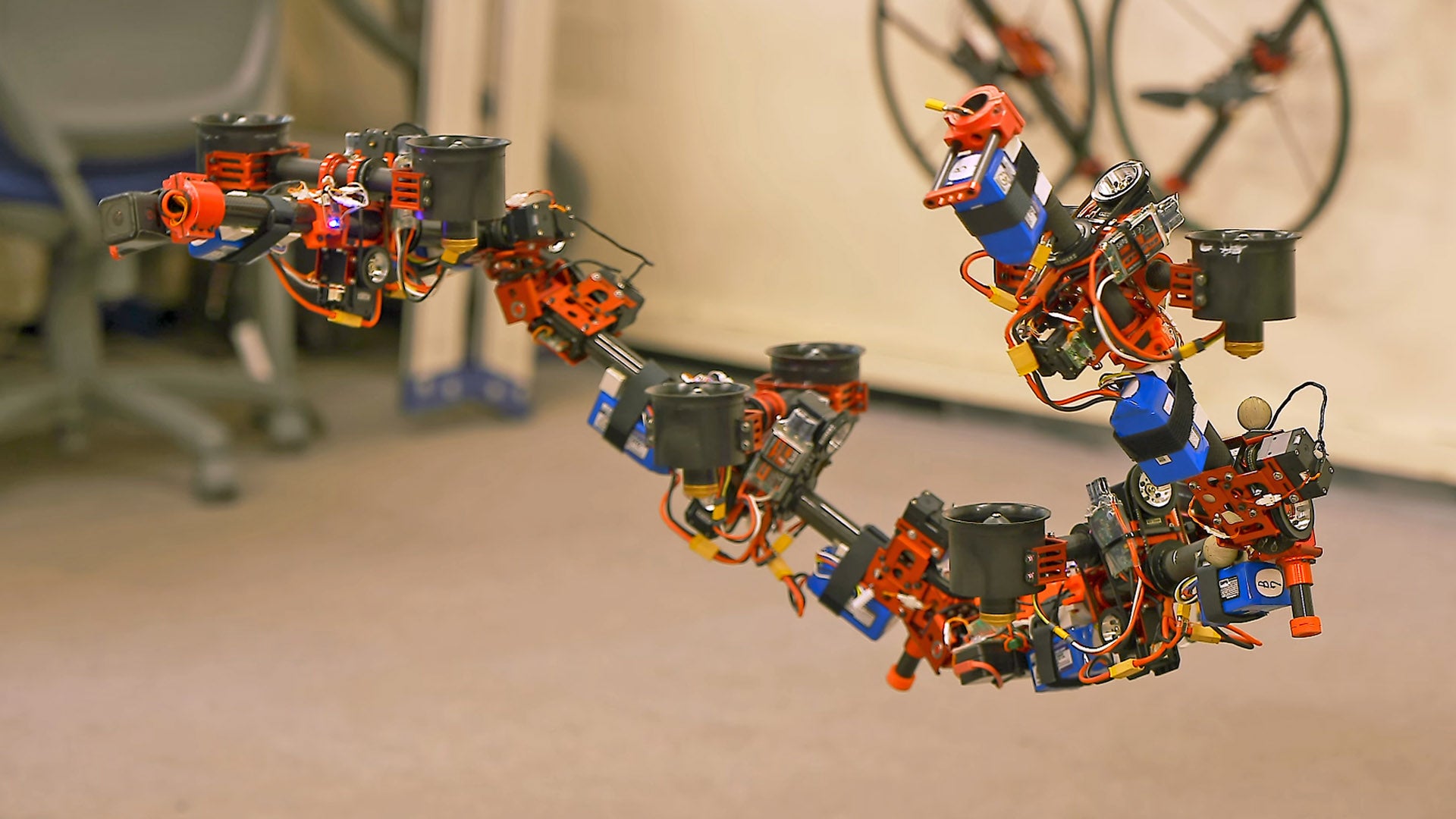- 1. On The Go Portable RV Water Softener
- 2. Watts Water Technologies RV-Pro Water Softener
- 3. Mobile Soft Water for RV
- 4. Poly Salt Free Water Softener For RV
- 5. On The Go OTG3NTP3M Portable Water Softener
- 6. Mobile-Soft-Water Portable Softener For RV
- 7. NUVO H2O Studio Water Softener System
- 8. On The Go OTG4-StdSoft Portable RV Water Softener
You would not put up with hard water in your home, so why should you put up with it in your RV? Blocked pipes and unsightly stains are a nuisance and get in the way of you enjoying trips in your RV. By investing in an on-the-go water softener you can take softened water with you wherever you happen to be.
When you install a portable water softener into your RV, your appliances will be more efficient and will last longer. You will also feel the benefits on your skin and your hair. They are compact devices that can be regenerated quickly and easily using just table salt. Some don’t have to be regenerated at all. Most models are very easy to install, and you will not need special tools or skills. To help you choose the right model, we prepared this useful guide to buying an RV water softener.
The Best RV Water Softener
This is an impressive water softener and conditioner that has a larger flow rate than other softeners and causes little drop in water pressure. The compact design means that it will fit perfectly into any RV storage locker but could also be used in a boat. The water softener has a capacity of 16,000 grains, and it can be regenerated using two boxes of common table salt. The process takes less than 30 minutes and lasts for up to 40 days, which is 1,600 gallons of softened water.
The unit is made from high-grade premium resin and features a 360-degree swivel so that it is easy to install on the inlet hose. This is a device that has been built to make transportation easy – it has a useful carrying handle on the top and a cap and plug to prevent leaks. Regeneration is easy thanks to the wide mouth opening.
- Compact design but high flow rate
- 16,000 grains capacity
- Carry handle, cap and plug for easy transportation
- No tools or electricity required
- Brand On The Go
- Model OTG4-DBLSOFT
- Weight 32 pounds
Significantly reduces the hardness of water
Simple to install – full instructions included
Test strips included so you know it’s working
Does not affect water pressure
May be too heavy for some customers
Will not work if you regenerate too late
Plastic fittings are a little cheap
This is a very user-friendly water softener that has a flow rate of four gallons per minute and will cause little in the way of pressure drop. You can protect all of the appliances on board your RV using this device to remove calcium, magnesium and trace amounts of iron.
Because it is very cheap to run and regenerates using ordinary table salt, this Watts water softener will not break your budget. It is also very easy to install and maintain, and the full cradle base ensures stability and safety as you are traveling around. Regeneration is easy and effective thanks to the flow valves and built-in line flow restrictor. You even get hardness strips so that you can check that it is working.
- Flow rate of four gallons per minute
- Little pressure drop
- Cheap to run
- Full cradle base for stability
- Brand Watts Water Technologies
- Model M7002
- Weight 9 pounds
Arrives ready to use without charging
Lasts for a month
Protects hot water heaters
Comes with clear instructions
Is not powerful enough for very hard water
Backflushing can be a bit tricky
Product support could be better
This is a highly effective unit that will remove calcium, iron, magnesium radium and many other heavy metals from a water supply for use in your RV. It is a compact unit measuring just nine inches in diameter and made from plastic reinforced with fiberglass. It is designed for 150 psig operating pressure. Setting it up is as simple using the nylon (lead-free) male hose connection inlet and the nylon male hose connection outlet.
Safety is assured as all the construction materials in this portable water softener comply with NSF 61, and the unit is very portable. This is a 16,000 grain capacity unit that has been loaded with half a cubic foot of eight-percent cross link styrene water softening resin. It can treat up to five gallons of water per minute and delivers 1,600 gallons of conditioned water. It regenerates without having to use electricity and comes with a manual.
- Only nine inches in diameter and portable
- Made from plastic reinforced with fiberglass
- 16,000 grain capacity
- Can treat up to five gallons of water per minute
- Brand Mobile-Soft-Water
- Model MSW0918-M-16S-C
- Weight 33 pounds
Great customer support
Easy to install and highly portable
Simple to operate
Not too expensive
You have to buy connecting parts
Not that good for drinking water
Simplicity is the strength of this salt-free water softener that does not require cartridge replacements or an electricity supply. You also don’t need to go to the trouble of backwashing with brine. It has a catalytic core with a stainless-steel inner screen. It also has a two-micron bacterial pre-filter so you can be confident that iron and intestinal parasites such as cryptosporidium and giardia have been removed.
The portable water softener is supplied with polyphosphate and an extra re-charge kit. It can treat any water that is up to 25 grains hard and delivers a flow rate of 30 gallons per minute. To further ensure your safety, the water softener is BPA-free and certified by the NSF. The installation nipples are included so it is ready to install and it even has its own wall bracket.
- Does not require electricity
- Catalytic core with a stainless-steel inner screen
- Delivers a flow rate of 30 gallons per minute
- Installation nipples and wall bracket included
- Brand Poly Salt Free Water Softener
- Model PSC1
- Weight 4 pounds
Very compact – takes up little space
Clothes feel softer after washing
Hassle free- you don’t have to buy bags of salt
Crystals are easy to replace
A water conditioner and not a softener
Some consumers found installation quite tricky
Not suitable for very hard water
Just right for RV and marine use, this On The Go water softener is superbly portable and very compact so it will take up little space. It’s also extremely easy to use and hassle-free. This design is unique (with a patent pending) and gives 8,000-grains of water softening capability. You can move it around and store it without any problems. Adding salt for regeneration has been made easy thanks to the extra-large mouth opening. It also has a 360° swivel on the inlet together with a high-flow shut-off control valve which facilitates a slow rinse. This also makes it super easy to connect the inlet hose.
Despite its small size, this unit can cope with high flow rates and will produce hardly any drop in pressure. When you need to carry out a quick back-flush, you can use the quick-reverse connection and get the job done in minutes. It comes with a high-pressure 4 foot drinking hose and a pack of hard water test strips. To regenerate, you simply need a box of common table salt and it takes 15 minutes or less.
- Compact and lightweight so highly portable
- Hassle-free to set up
- Handles high flow rates and does not drop the pressure
- Regenerates quickly using table salt
- Brand On The Go
- Model BB900-DGR
- Weight 18 pounds
Highly effective yet compact
Cheap to regenerate
Very easy to set up
Protects appliances
Regeneration required every month or so
May be flow sensitive
For those RVers who are very short of space or who like to take short trips, this model is ideal for you. It is only a tenth of a cubic foot in volume and has a small (3,200 grains) of water softening capacity. Nevertheless, it is highly efficient at removing calcium, magnesium and many other heavy metals.
You don’t need electricity to regenerate this water softener system and it is exceptionally easy to use. The overall tank is only six inches in diameter by 15 and 5/8 inches high and made from reinforced plastic which can withstand 150 psig of pressure. The inlet and outlet are simple garden hose connections made from nylon materials listed as NSF 61 compliant. The male hose connections are capped for mobility.
- Highly portable and compact
- 3,200 grains of water softening capability
- Contains cross link styrene softening resin
- Will treat 320 gallons of water
- Brand Mobile-Soft-Water
- Model MSW0613-M-3.2S
- Weight 14 pounds
Very compact for small places
Regenerates quickly using table salt
Easy to install
Robust casing
May not be powerful enough for very hard water
Alters the taste of the water
Fully approved by the FDA & NSF, this unit is suitable for apartments and RVs that have a single resident. It uses advanced technology to lower the pH level of the water with a chemical process called chelation. During this process, the mineral ions that cause water hardness bind to a specially designed agent that maintains their solubility and stops them from causing hard water problems, such as scaling up appliances.
Thanks to the compact design of this water softener system, it will fit anywhere and requires no electricity. You don’t need to use salt to recharge it and it is compatible with all plumbing fixtures and appliances.
- Requires no electricity
- Maintains metal ions in solution
- Extends life of appliances
- Does not need to be recharged with salt
- Brand NUVO H2O
- Model DPSB-A
- Weight 0.16 ounces
Compact unit
Does not need salt to recharge
No mess and simple to use
Some problems in hot climates
Does not last very long
This unit provides a simple fit with no need for tools, electricity or specialist skills and knowledge. The 360 degree swivel makes it easy to connect to the inlet hose. It has a highly compact design with a diameter of less than seven inches and a length of 22 inches. Therefore, it will easily fit into most storage bays and lockers. It can cope with high flow rates and will not cause a pressure drop.
There are 8,000 grains of water softening capacity which lasts for approximately 20 days. Then it takes just 15 minutes to regenerate it with simple table salt. It comes with a cradle base for a very secure fitting and a carry handle. There is also a large mouth opening which makes it convenient to add the salt. The lightweight design means that it is easy to carry around with you – all you have to do when you want to move it is cap the plug to prevent leakage.
- 8,000 grains of water softening capacity
- Large mouth for adding salt
- High-flow shut-off control valve
- Carry handle and cradle base
- Brand On The Go
- Model OTG4-StdSoft
- Weight 18 pounds
Regeneration is very quick
Highly effective
Compact design
Operational videos very useful
Regeneration only lasts a month
Plastic fittings are a little flimsy
Best RV Water Softener Buying Guide & FAQ
Things to Consider When Buying an RV Water Softener
A water softener for your RV is a significant investment but if you choose the right device you will soon be reaping the benefits. Buy the wrong one, however, and you may have wasted your money.
Before you rush in and order one for yourself, take a look at our guide to what you should consider before buying water softeners.
- Technology used to soften the water
There are several different types of technology that can be used to soften water. Some are salt-free, which you may prefer, but you may not find that they are as effective for your particular type of water. It is worth doing some research first. Other units are based on electrical wires to remove mineral ions. These will not get rid of all hard minerals but will go a long way towards protecting your pipes and plumbing fixtures. Magnetic water systems are another option and they also attract mineral ions and prevent accumulations in pipes.
- Size of unit
Size is a crucial factor when choosing a water softening unit for an RV. Inevitably, space will be limited so a compact model will be most suitable. Portable units are very useful as you can take them with you when you move around. This type of unit looks a little like a small tank and is big enough for use in an RV that has up to five users.
- Hardness of the water that needs to be treated
Water hardness is very variable. It may be wise to use a hardness testing kit to find out the hardness of the water that you want to treat. The overall average reading for the US is 30 GPM. If the water is very hard, you will need a more powerful water softener.
- Capacity
This is measured as grains and you may see this listed in the description of the unit. It is a measure of the water softener’s capacity to treat hard water. If you need the softener to get rid of many grains of hard water every week, you will need one with a large grain capacity. The average weekly consumption of water is also important in this consideration. A low grain softener that has many gallons of water flowing through it will not last very long if the water is also very hard. Most water softeners for RVs have a grains capacity of several thousand. If you buy a unit that has a larger capacity than you need, you will have wasted money on a feature that you will not use. Salt-based water systems will need to be regenerated more often if they have a lower grain capacity.
- Automation.
Some water softeners are operated manually and have to be regenerated every time you need softened water. Others will restart automatically and most users find this more convenient. It is a nuisance to have to constantly renew and regenerate a water softening unit.
- Flow rate
This refers to the speed at which water travels through the unit and is often given in the device specification. It is usually measured in gallons per minute. This varies between models. The larger the flow rate, the more water the unit can handle. Think about how much water you use in your RV and what the peak flow rate would need to be to meet your needs.
- Maintenance requirements
Do you have the time and ability to recharge a water softener? Some units require more maintenance than others and this is something that you should think about before making a purchase. Other models are simply fitted and then carry on working or have cartridges that need to be replaced. It would be useful to check out water softener reviews to see how consumers get on with maintaining the model you have in mind.
Why You Should Use a Portable Water Softener
A water softener for your RV is a very useful device and they are very popular with RV enthusiasts. Here are some of the main reasons why you should invest in one.
- They can save you money.
Any appliance in your RV that uses water will do better on softened water. That includes coffee pots and dishwashers. This is because softened water does not produce a build-up of limescale which can interfere with heat exchange surfaces. The appliances will be more efficient and will use less electricity. It is also possible for limescale to build up within the pipes of your RV. Although a complete blockage is unlikely, it can be expensive to fix if it does happen.
- Soft hair and skin.
A major complaint about hard water is that it makes your skin feel dry and your hair can feel like straw. This is because of the traces of magnesium and calcium which makes hair brittle and dull. Sometimes, hard water can also cause skin irritation because it is stripped of natural oils. Soft water is kinder to skin and hair.
- Reduces cleaning.
When you have hard water in your RV, limescale builds up over time and looks like a white stain and then a crust. It looks unattractive and is hard work and time consuming to remove. You can avoid a lot of scrubbing and the use of harsh chemicals by softening your water. This also protects the environment.
- Taste and odor.
Some people think that soft water tastes better. Others do not like the taste of softened water so it is a matter of personal preference.
Types of RV Water Softeners
All water softeners make the water softer but they do not do it in the same way. There are several different categories of water softener based on the way in which they work. Here are the main ones.
- Ion-exchange water softeners
These work by passing hard water through a medium that substitutes sodium, hydrogen or potassium (in salt) for the metals that cause hardness such as iron, calcium and magnesium. The technology is tried and tested and has been used for decades. Salt is the most popular medium to use. Water passes through a resin bed which produces sodium ions and these replace mineral ions in the hard water. When the salt gets used up, it has to be regenerated and flushed. The hard minerals get washed down the drain.
It is important to note that if you use sodium chloride salt, it can result in you ingesting a lot of sodium and for some people this can have health implications. Even though table salt is the cheaper option, for health reasons you may prefer potassium salt. You also have the option of a multi-tank or a single-tank system. Realistically, there is likely to be room for only a single-tank unit in an RV but this means that there will be downtime whilst it is being regenerated. This can be done overnight. If your water needs are high in your RV, you may choose a multi-tank system.
- Salt-free water softeners
This type of water softener uses modern nanotechnology to change the structure of the molecules that are present in the water. This stops them from being able to form scale. The unit contains a filter system that causes chemical changes. The softened water also attacks any existing build-up of scale in your pipes and breaks it down. As well as soft water, you get a descale!
As there are no chemicals, the water that you use and the waste water that you produce are safe for the environment. These units also require less maintenance; you do not need to buy any salt and they do not need a regeneration cycle. In areas where water is scarce, this also saves on wasting water. Some users prefer the texture of water softened in this way.
- Magnetic water softener
The hard metal ions in drinking water can be altered using a magnetic field. They are often in the form of a magnet that is a plug-in device that clips to the water supply pipe. The magnetic field alters the electromagnetic properties of calcium carbonate minerals so that they do not adhere to each other or to pipe work. The main disadvantage of this method is that the effect only lasts for 48 hours after which the water becomes hard again.
Best RV Water Softener FAQ:
An RV water softener is used in recreational vehicles to get rid of minerals that make the water ‘hard’. Typical minerals are calcium and magnesium and they are present in the water as ions that have a positive charge. Because it has a lot of ions, this type of water behaves differently to soft water. You may notice that it cannot dissolve the detergents in soap and therefore does not lather as well. It also tends to form deposits on pipes and inside appliances which can cause blockages and stop appliances from working correctly. There are several different techniques for removing ions from water but most use resins which trigger ion-exchange or lime softening.
It is useful to think of a portable water softener like a magnet. In chemistry, negatively and positively charged particles (ions) are drawn to each other – they are described as attracting. The magnesium and calcium ions that cause water hardness are positively charged. Water softeners contain filters which are full of negatively charged resin beads. The positive ions ‘stick’ to the resin and are removed from the water.
Over time, many ions will adhere to the resin in the water softener and it will stop working. At this stage, it needs to be regenerated. This is done using salt in water (brine) which is passed over the resin. Ion exchange takes place again but this time it is in reverse so minerals adhering to the resin are released because they are replaced by sodium ions. At the same time, the resin is cleaned and disinfected. Finally, you flush out the softener and discard the water which will be full of minerals and contaminants. The method that is used for regeneration varies between models. There may be a knob that you turn after adding table salt. The amount of water that flows through the softener on a daily basis will determine how often it needs to be regenerated.
Regeneration is an important process and needs sufficient time to be completed correctly. For most units, you should allow around an hour and a half to get the whole job done. This allows enough time for all of the resin medium to be thoroughly cleaned. Some small modern units can be regenerated in less than half an hour and some claim to only take 15 minutes. For some units, you will need to buy some special salt or use standard table salt. Most RV owners find that they complete the process once a month or so. The more water that flows through the water softener, the more often it will need to be regenerated. It may be more sensible to buy a bigger capacity unit that you don’t have to regenerate so often.
You are able to use potassium chloride instead of sodium chloride (table salt) to regenerate your water softener. Potassium chloride is a bit more expensive to purchase but as the advantage of not adding sodium to your diet. This may be important to some customers who have health conditions that are made worse by a high sodium diet. This includes some kidney and cardio-vascular conditions. It is worth noting that potassium chloride can melt when it is wet which makes it form a bridge in the salt tank. You can deal with this by only filling the brine tank to halfway so that you can keep a track of how it has gone down after regeneration.
It is quite common to only use your RV at certain times of the year and your water softener could spend several months not being used. When you know that you will not be using it for a while, you should disconnect it from the water supply. There should be valves and caps to prevent leakage. Drain all of the water out and take out the filter cartridges from the unit. Let them dry completely and then bring them into your home for storage. The rest of the water softener can be left in your RV until you are ready to head out again on an adventure.
Our Top Pick:
Our top pick of an RV water softener for you has a high flow rate, a compact design and causes little drop in water pressure. It has a 16,000 grain capacity and is regenerated using two boxes of common table salt in just 30. Each regeneration lasts 40 days or 1600 gallons of water and is completed very quickly.
The unit is made from high grade premium resin and features a 360 degree swivel so that it is easy to install to the inlet hose. It comes with a carry handle, a cap and plug to prevent leaks. It requires no tools or electricity and uses a standard garden hose connection to hook up to the park faucet.

